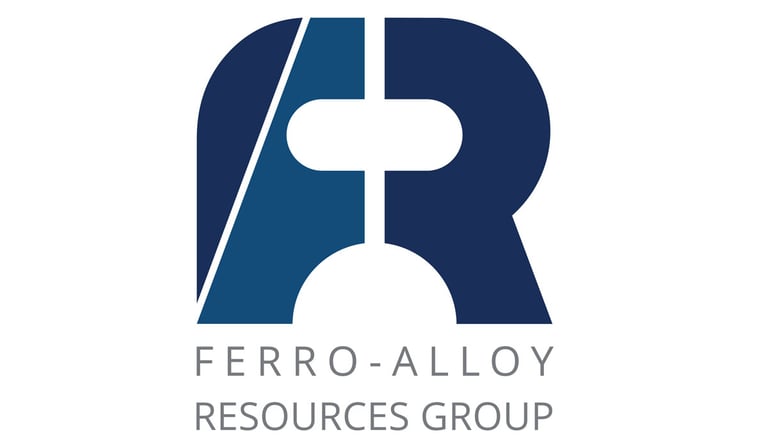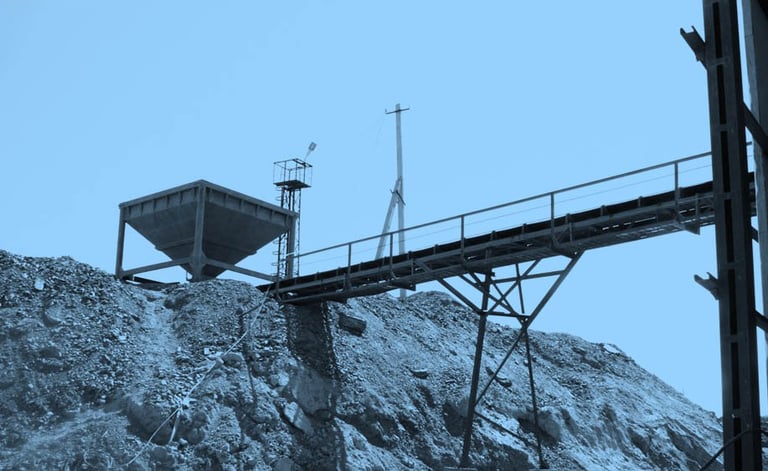Ferro-Alloy Resources Limited (LON:FAR) has announced the results of its feasibility study on Phase 1 of the large Balasausqandiq vanadium deposit in Southern Kazakhstan. The compelling economics demonstrated by the Feasibility Study show the strategic nature of the Project and its potential to become one of the largest and lowest cost vanadium producers globally.
The Company has also identified additional product and value engineering opportunities with the potential to deliver significant further upside value which will be investigated during the Project’s detailed engineering phase.
The Company continues to advance discussions with a number of financial institutions interested in providing debt and equity finance for the Project.
Highlights
· Compelling economics with net present value (NPV) of US$748m (post tax discount rate of 8%) and Project internal rate of return (IRR) of 22%
· Funding required to enter production of US$520m
· Bottom decile of industry cash operating costs, with attractive by-product credit value upside:
o Cash cost of US$4.35 per pound (“lb”) (V2O5 equivalent basis)
o Cash cost of US$0.36/lb (net of by-product credits)
· Vanadium pentoxide (“V2O5“) price forecast of US$8.67/lb in 2029 increasing to US$10.59/lb in 2037 and thereafter
· Annual production of 8,500 tonnes of V2O5, plus 247,000 tonnes of carbon black substitute (“CBS”)
· Mine life of 20 years
· Phase 2 expansion could increase total production to four times the Phase 1 level, based on ore-bodies 2, 3 and 4, (“OB2,3,4”) with an equally long mine life
· Areas for optimisation show the potential to significantly improve NPV and IRR following the completion of front-end engineering design (“FEED”)
· Discussions ongoing with potential customers for a new type of CBS (announced on 27 June 2025) to be made from the mine waste, additional to the current CBS
· Discussions in progress, with expressions of interest received from potential debt and equity providers
Commenting on the results of the Feasibility Study, Nick Bridgen, CEO of Ferro-Alloy Resources, said:
“The Feasibility Study demonstrates the compelling economics of the Balasausqandiq Project and its potential to become the one of the world’s largest and lowest cost vanadium producers.
Demand for vanadium is growing with the world market expected to enter a deficit from 2029 onwards. By 2035 the annual deficit is expected to be more than the total 2024 world production.”
Sir Mick Davis, Chairman of the Board and Chairman of Vision Blue Resources, said:
“The positive results of the Feasibility Study show that Balasausqandiq has the potential to be the lowest cost primary vanadium producer in the world with a cash operating cost of US$0.36/lb net of by-products, with significant staged expansion potential, making it a highly attractive investment proposition. The world needs more vanadium and Ferro-Alloy Resources has the capability to become the global leader in the vanadium market, fulfilling the Vision Blue Resources objective of backing strategic industry-leading assets.”
Background
Most of the world’s vanadium is produced from vanadiferous titano-magnetite, a form of iron ore, using a process which requires pre-concentration and high temperature roasting. However, the Balasausqandiq ore-body benefits from being a black shale, which does not require concentration or roasting, resulting in a simpler flow sheet, with lower production costs and significantly reduced environmental emissions.
The Group previously operated a large scale 15,000 tonnes per annum pilot plant that enabled the process to be optimised and around 20 tonnes of ammonium metavanadate (a product which only requires a final heating stage to convert to vanadium pentoxide) was produced and sold commercially. With certain modifications, the pilot plant operates today as a research and development (“R&D”) centre for the Group’s CBS products as well as for treating purchased concentrates.
Independent Feasibility Study results
In 2021, SRK Consulting (Kazakhstan) Limited (“SRK”) in conjunction with Tetra Tech Limited (“Tetra Tech”), were commissioned to produce a feasibility study to independently verify the Group’s processes. The Group also commissioned SGS Canada Inc (“SGS”), an international independent laboratory testing organisation to carry out the detailed test work under the supervision of Tetra Tech.
Project economics (Phase 1 only)
NPV / IRR
The projected NPV of the Project is US$748m and the projected IRR of the Project is 22%.
Funding requirement
The table below summarises the main elements of the Project funding requirement:
| US$ million | |
| Capital expenditure | 490.2 |
| Contingency | 73.5 |
| Pre-production income, less costs | (43.7) |
| Funding requirement to get into production | 520.0 |
Capital expenditure breakdown:
| US$ million | |
| Mining | 20.5 |
| Sulphuric acid plant | 50.0 |
| Processing | 204.1 |
| CBS plant | 48.2 |
| Tailings storage facility | 22.1 |
| Site infrastructure | 102.1 |
| Project, engineering and management | 43.2 |
| Sub-total | 490.2 |
| Contingency (15%) | 73.5 |
| Total | 563.7 |
Cash cost of production
When all products are considered on a vanadium-equivalent basis, the cash cost of production of V2O5, after all royalties and taxes, is US$4.35/lb. On this metric alone, this would make the Project the lowest cost V2O5 primary producer globally, and amongst the bottom 10% of global producers including co-producers who make vanadium as a by-product of steel production from magnetite.
When the net revenues from the carbon and other by-products are deducted from costs the forecast net cash operating costs are reduced to US$0.36/lb V2O5.
Production output
Annual production from the Project is expected to be 8,500 tonnes of V2O5 and 247,000 tonnes of CBS as well as minor quantities of uranium and molybdenum.
Funding
The Company has received expressions of interest from potential debt and equity providers interested in financing the Project’s construction. The Company intends to further enhance the return on investment to equity investors by securing an attractive debt financing package for the Project and engaging strategic investors for equity financing.
Northcott Capital Limited and Oval Advisory Limited have been appointed as lead financial advisers and are assisting the Company in its engagement with interested parties.
Value enhancement opportunities
During completion of the Feasibility Study, the Company identified areas for optimisation and value enhancement beyond those included in the final Feasibility Study. It is expected that further investigation during the FEED stage of the Project could lead to significant further improvement in Project economics.
The following are the areas which the Company believes have potential for optimisation which could reduce capital and operating costs, increase production, and significantly improve the Project NPV and IRR.
Reagent consumption and metallurgical recovery
The Feasibility Study has incorporated the higher level of reagent consumption that was indicated by the laboratory-scale test work carried out by SGS, achieving a metallurgical recovery of 86.2%. Significantly lower reagent consumptions were used in the much larger scale historical pilot test work programme, also achieving a higher metallurgical recovery. The Group’s technical team believe that lower reagent consumption and higher recovery can be achieved in actual operations, and this will be tested further in the next phase.
Carbon recovery
Carbon concentrator recovery was tested by SGS but the potential to enhance recoveries by recirculating the concentrator tailings is still to be confirmed. Although a conservative estimate of recovery is included in the Feasibility Study, there are indications that a higher recovery might be achievable. This would be expected to increase the scale of CBS production, expanding the Company’s by-product value, and further reducing the Project’s already industry leading forecast net cash operating costs.
CBS dry milling
The Feasibility Study design for the milling of the CBS product is premised on wet milling. The decision to select wet milling was made for Feasibility Study purposes, however the Group has installed and tested a 400 kg per hour dry milling test plant and achieved excellent results, albeit testing with milled ore rather than concentrate. The use of dry milling greatly simplifies the operation as filtration and drying of finely milled powders is avoided. The Company believes that it is likely that this part of the operation will be changed to a dry milling process during the FEED stage of development, delivering significant capital cost savings and further enhancement of Project economics.
New CBS product
The Company has developed a new CBS product (see Company announcement dated 27 June 2025) which can be made from the high-carbon waste to be mined to access the vanadium ores. This is in addition to the original CBS product which is made by concentrating the carbon in the tailings from the vanadium treatment plant. The new material has not been included in the Feasibility Study. No scheduling of production has yet been carried out but the amounts of suitably high carbon material within the waste already scheduled to be mined would indicate that an average of around 225,000 tonnes of this new type of material might be produced per year in addition to the 247,000 tonnes of the original CBS that have been included in the Feasibility Study. This material is available at no additional mining cost, requiring limited capital expenditure on crushing and dry milling. Discussions with potential customers are continuing after successful laboratory testing. Further bulk testing of this product is planned.
Value engineering
The Company’s operational team has gained considerable experience in procurement and fabrication through the construction and development of the Company’s existing operations. The Company believes that there is the opportunity to negotiate more favourable terms with suppliers than those included in the Feasibility Study, particularly regarding local and regional services and equipment.
Mineral Resources and Ore Reserves
| Resource Class | Weathering grade | Mass (Mt) | Grade (%) | Material Content (tonnes) | ||||||
| V2O5 | Mo | U | C | V2O5 | Mo | U | C | |||
| Measured | – | – | – | – | – | – | – | – | – | – |
| Indicated Resource | Oxide | 1.56 | 0.67 | 0.0139 | 0.0047 | 7.16 | 10,560 | 216 | 73 | 112,151 |
| Transitional | 1.25 | 0.66 | 0.0138 | 0.0045 | 7.17 | 8,260 | 172 | 56 | 89,869 | |
| Fresh – sulphide | 30.08 | 0.61 | 0.0150 | 0.0052 | 8.83 | 184,814 | 4,523 | 1,554 | 2,655,454 | |
| Total | 32.89 | 0.62 | 0.0149 | 0.0051 | 8.69 | 203,634 | 4,911 | 1,683 | 2,857,473 | |
| Inferred | – | – | – | – | – | – | – | – | – | – |
| * Differences may occur in totals due to rounding. | ||||||||||
| Ore Class | Weathering grade | Mass (Mt) | Grade (%) | Material Content (tonnes) | ||||||
| V2O5 | Mo | U | C | V2O5 | Mo | U | C | |||
| Probable Reserve | All Material Types | 30.93 | 0.59 | 0.0143 | 0.0049 | 8.35 | 181,781 | 4,421 | 1,520 | 2,528,596 |
* The Balasausqandiq Ore Reserve Statement has its effective date as 30 September 2025, and is reported at a cut-off grade of 0.29% V2O5 Eq within an optimal pit shell.
The Reporting Standard adopted for reporting of the Mineral Resource and Ore Reserve Statements for the Project is that defined by the terms and definitions given in “The 2012 Australasian Code for Reporting of Exploration Results, Mineral Resources and Ore Reserves as published by the Joint Ore Reserves Committee of the Australasian Institute of Mining and Metallurgy, Australian Institute of Geoscientists and Minerals Council of Australia” (the “JORC Code (2012)”).
The JORC Code (2012) has been aligned with the Committee for Mineral Reserves International Reporting Standards (“CRIRSCO”) reporting template.
Mining
The Balasausqandiq mine will comprise a conventional drill and blast, truck and shovel open pit operation, with waste rock dumps located externally to the pit. The open pit operation is planned to deliver 30.9 million tonnes (“Mt”) of ore from 167.7 Mt total material mined, over a mine life of 20 years, with an average strip ratio of 4.4 tonnes of waste per tonne of ore, with average grades of 0.59% V2O5, 8.35% carbon, 0.005% uranium and 0.014% molybdenum.
Metallurgy
The Feasibility Study test work programme was designed to independently verify the processes developed by the Company for the efficient extraction of vanadium, molybdenum, uranium and carbon products from the Balasausqandiq black shale ore. The bulk and variability testing programme at SGS used ore samples representative of the Balasausqandiq mineralisation selected by Company geologists and Tetra Tech. The tests completed on crushing, grinding, leaching, impurity removal, product purification, carbon, solid liquid separation and tailings management provided SRK and Tetra Tech validated measurements to support performance parameters, equipment selection and financial metrics. Additional process improvement opportunities have been identified during the Feasibility Study that will be considered and incorporated during the following detailed design phase.
Carbon
The ore at Balasausqandiq contains around 8.35% carbon which flows through to the tailings from the vanadium extraction process. Test work carried out by SGS indicated that the carbon level in these tailings can be concentrated to 40% carbon with a recovery of 72%. Further test work carried out by specialist rubber testing consultants indicated that this material can be used as a reinforcing filler in partial replacement for carbon black in making rubber. When used in tyre sidewalls (a major use of carbon black) the tyre performance was not materially different from tyres with the reinforcing filler made wholly from carbon black. The expected annual production of this CBS product, following commissioning of the main plant, is around 247,000 tonnes.
Vanadium for electrolyte for the vanadium redox flow battery market
At the existing process plant, the Company has successfully tested the production of high purity V2O5, as well as vanadium trioxide suitable for making battery electrolyte, and the electrolyte itself. The Feasibility Study envisages the sale of vanadium pentoxide flake, suitable for the steel industry, but it is recognised that as the market for vanadium redox flow batteries (“VRFBs”) develops, an increasing proportion of the market will include these other vanadium oxides, or the electrolyte itself. The necessary small changes to the plant can be made either at a later date or during the engineering phase prior to construction.
Currently, high purity vanadium is used for battery electrolyte, chemical, aerospace and military purposes and sells for a premium price. This potential benefit has not been incorporated into the financial model for this Feasibility Study.
Markets
Vanadium
The Company commissioned CRU International Limited (“CRU”) to assess the available markets and pricing for standard grade V2O5 and to take account of the geography and logistics costs.
CRU advised that a deficit of supply is likely to emerge from 2029 onwards, with use of V2O5 in long term energy storage batteries rising rapidly to account for some 76% of annual V2O5 demand by 2040. Indeed, CRU foresee a deficit of some 171,000 tonnes of V2O5 per annum arising by 2035, which is larger than the entire market in 2024.
Bearing in mind logistics for different locations of customers, CRU forecast net-back prices at factory gate for the Company of:
| Net-back | |
| Year | Per lb V2O5 |
| US$ 2025 real | |
| 2028 | 8.02 |
| 2029 | 8.67 |
| 2030 | 9.05 |
| 2031 | 9.43 |
| 2032 | 9.81 |
| 2033 | 10.19 |
| 2034 | 10.60 |
| 2035 | 10.60 |
| 2036 | 10.60 |
| 2037 onwards | 10.59 |
CBS
Global market consultants, Smithers Information Limited (“Smithers”) advised that, based on the results of technical tests on rubber made from CBS, and by comparison with other reinforcing fillers on the market, the material can be sold for US$500 per tonne in the tyre market and up to US$600 per tonne in the non-tyre market. The Company has utilised a price assumption of US$500 per tonne in the Feasibility Study. Achievement of the higher US$600 per tonne pricing would further increase the Project’s forecast EBITDA by US$24.7m per annum, solely from the Company’s 247,000 tonnes of initial CBS production. Further value may be derived from the saving to customers of emissions tariffs owing to the much lower CO2 embedded emissions of CBS compared with carbon black.
Environment
Vanadium
When vanadium is used as an alloy, the additional strength and performance of the resulting steel significantly reduces the quantities of steel required. Steel production accounts, very broadly, for around 10% of world CO2 emissions, so increasing use of high quality vanadium containing steels can play a significant role in minimising this source of global warming.
VRFBs are the leading technology for large scale, long duration, energy storage batteries which are increasingly needed as the use of intermittent renewable energy sources makes up an increasing proportion of energy generation. The increase in demand for vanadium for this purpose is expected by CRU to lead to a shortage of vanadium, starting in 2029. Balasausqandiq is, therefore, essential to the world’s move to renewable energy and the mitigation of global warming.
CBS
Production of carbon black from current industrial manufacturers is a highly polluting process, involving the combustion of heavy hydrocarbons in an oxygen depleted atmosphere, resulting in CO2 emissions of between 2 to 3 tonnes per tonne of product, as well as other harmful polluting off-gases. However, FAR’s CBS products would be produced from the wastes from mining and processing of vanadium ores, resulting in no additional emissions being generated. Subsequent milling, drying, bagging and transport are expected to amount to less than 0.25 tonnes of CO2 emissions per tonne of CBS product. The net benefit of FAR’s CBS product versus conventional carbon black products, would thus provide a forecast reduction in emissions of approximately 90%.
Compliance with global standards
Ferro-Alloy Resources’ environmental consultants have undertaken numerous baseline studies and other reviews taking into account the requirements of the various ESG based standards including the Equator Principles and the IFC’s Performance Standards. No issues have been identified that would prevent the Project from progressing.
Feasibility Study service providers
The Feasibility Study service providers were SRK holding overall responsibility for the Feasibility Study, Tetra Tech for metallurgy and process plant design, SGS for laboratory test work, CRU providing V2O5 price forecasting and vanadium market insight and Smithers who carried out the technical and marketing reports on the CBS.
Future phases
Phase 1 is based only on OB1, the first ore-body out of seven within the Group’s licence area for which there is geological evidence. Of the remaining six ore-bodies, OB2,3&4 have been explored and full assay and mineral resource estimates will be published in due course. However, preliminary analysis, based on semi-quantitative x-ray fluorescence of OB2,3&4, indicates that there will be ample resource to consider an additional Phase 2 operation at a scale of around three times larger than Phase 1 with a similarly long mine life. No study has yet been made but the ore is known to be very similar and mining and metallurgical processes are also expected to be similar allowing further upside. The remaining ore-bodies have not been explored but will remain for further future development.







































